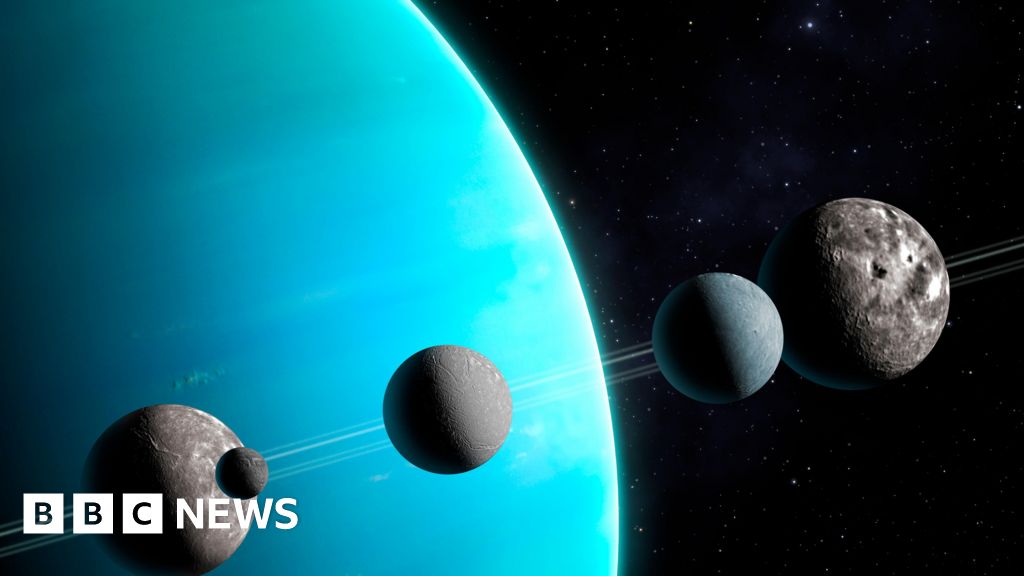New study on moons of Uranus raises chance of life SPL Artwork: Uranus and its five largest moons had been thought to be inactive and sterile. The planet Uranus and its five biggest moons may not be the dead sterile worlds that scientists have long thought. Instead, they may have oceans, and the moons may even be capable of supporting life, scientists say.
Much of what we know about them was gathered by Nasa's Voyager 2 spacecraft which visited nearly 40 years ago. But a new analysis shows that Voyager's visit coincided with a powerful solar storm, which led to a misleading idea of what the Uranian system is really like. Uranus is a beautiful, icy ringed world in the outer reaches of our solar system.
It is among the coldest of all the planets. It is also tilted on its side compared to all the other worlds – as if it had been knocked over – making it arguably the weirdest. We got our first close-up look at it in 1986, when Voyager 2 flew past and sent back sensational pictures of the planet and its five major moons.
But what amazed scientists even more was the data Voyager 2 sent back indicating that the Uranian system was even weirder than they thought. The measurements from the spacecraft's instruments indicated that the planets and moons were inactive, unlike the other moons in the outer solar system. They also showed that Uranus's protective magnetic field was strangely distorted.
It was squashed and...
Pallab Ghosh.



















